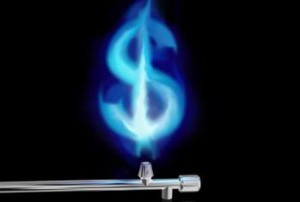 Thanks to breakthroughs in seismic imaging, horizontal drilling and hydraulic fracturing, the US in 2012 reduced its reliance on much dirtier coal by shifting to gas-fired power plants. This trend is expected to continue, spurred by low gas prices and increased regulation on coal. The move to shale gas is being heralded as a key to economic prosperity and a clean energy future. But there are other options for displacing baseload electricity from retired coal plants, the principals being nuclear, renewables and energy efficiency. Will the gas bonanza enable or postpone the transition to these cleaner options?
Thanks to breakthroughs in seismic imaging, horizontal drilling and hydraulic fracturing, the US in 2012 reduced its reliance on much dirtier coal by shifting to gas-fired power plants. This trend is expected to continue, spurred by low gas prices and increased regulation on coal. The move to shale gas is being heralded as a key to economic prosperity and a clean energy future. But there are other options for displacing baseload electricity from retired coal plants, the principals being nuclear, renewables and energy efficiency. Will the gas bonanza enable or postpone the transition to these cleaner options?
While natural gas produces half the CO2 emissions of coal and emits relatively smaller amounts of nitrogen oxides, it is more polluting than nuclear power, which provides nearly carbon-free energy, and it is more polluting than most renewables as well as the cleanest source—energy efficiency. A glut of cheap gas could shelve investments in these alternatives and could encourage consumers to use more energy, slowing the conversion to more efficient appliances, motors, and energy-smart equipment.
While the US is expanding its natural gas industry, it is also advancing its nuclear fleet. Operating reactors are being made safer in the aftermath of the tsunami-triggered disaster at the Fukushima Daiichi plant in Japan, and the industry is investing in a next generation of more secure reactors, led by utilities in the Southeast including the AP1000 project at Plant Vogtle co-owned by Georgia Power. Lacking a federal repository for nuclear waste, utilities must use on-site storage for their spent fuel. A long-term storage solution is still a national need.
The economic and policy uncertainties are considerable. Natural gas prices are volatile, nuclear construction costs are difficult to predict, wind and solar technologies are advancing rapidly, and the demand for electricity could remain flat or heat up. Policymakers may decide that CO2 emissions should continue to go unpriced, or they may regulate or tax them. With so many risk factors, how should utilities respond to the glut of cheap natural gas?
Utilities face the imperatives of affordable electricity, environmental stewardship, and secure and reliable power. Remaining flexible and nimble is going to be a secret to their success. Shrinking the historic dominance of coal by expanding gas, nuclear, renewables and energy efficiency is the multi-source solution. History has shown that single-source energy approaches are fraught with risk.
How should policymakers address the phenomenon of cheap natural gas at this time and its implications for alternative energy sources?
Find additional relevant resources below:
Update of the MIT 2003 Future of Nuclear Power
Base-load Electricity from Natural Gas and Nuclear Power: The Role of Federal and State Policy
[…] Original article Filed in: International News Tags: Carbon and De-carbonization Cheap Natural Gas Efficiency Energy and Economy Energy Efficiency and Renewable Energy energy investment Finance gas-fired power plant horizontal drilling… Read more »
Incentivize industry and academics to solve problems. Stop subsidizing corn for ethanol and other pork barrels and spend the money helping proven enterprises succeed without bureaucratic roadblocks. Or, keep on having… Read more »
Ms. Brown article is both moderate in tone and content. But I am less sanguine than her about utilities being able to significantly rely on either nuclear or renewables in the very… Read more »
The answer to the policy question asked above is simple, in principle. It’s the same as it has been from the time we recognized that the atmosphere is not a… Read more »
Lower cost natural gas will not effect most renewable energy deployment. The cost of natural gas has a primary impact on new central station power plants and only in regions… Read more »
Professor Brown has nicely outlined the key policy choices for energy going forward. The replies so far have come from regular contributors and reflect their continuing thoughtfulness on the subject. … Read more »
What a thoughtful conversation! With respect to Dr Brown’s final question, some recent modeling efforts by EIA have suggested there is a strong chance that a sustained low price for… Read more »
Prof. Brown’s key point: “The economic and policy uncertainties are considerable.” And those uncertainties have a tangible impact on the path of development. Domestic nuclear power development is now virtually… Read more »
Lewis makes a good point about the stagnation of domestic nuclear power with natural gas being easier and more affordable. It isn’t just nuclear, however. The low cost and… Read more »
An interesting report from Citi Research found that shale gas and renewables have a symbiotic relationship, not a competitive one: “Much has been said about the emergence of shale heralding… Read more »
I find the conclusions of the Citi Research report problematic. They’re correct, insofar as increasing penetration by renewables creates an enormous problem for balancing electrical supply and demand (i.e., generation and… Read more »
Even with moderately priced natural gas, energy efficiency is still often the most cost-effective “source” of energy. Utility regulators should remove the “throughput bias” frequently present in utility rate structures… Read more »